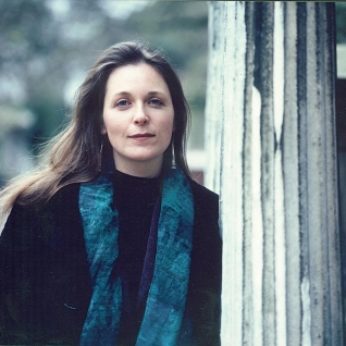Composer: Deirdre Gribbin (b. 1967)
Performance date: 27/06/2022
Venue: Bantry House
Composition Year: 2020
Duration: 00:31:44
Recording Engineer: Eduardo Prado, Ergodos
Instrumentation: 2vn, va, vc
Instrumentation Category:String Quartet
Artists:
Doric String Quartet (Alex Redington, Ying Xue [violins], Hélène Clément [viola], John Myerscough [cello] -
[quartet]

Deirdre Gribbin [b.1967]
Dark Matter Hunting [2020] WORLD PREMIERE
1. ‘A Day Without Yesterday’
2. ‘Black Rain’
3. ‘Einstein Cross’
4. ‘Inter-nebular’
Dark Matter is a hypothetical invisible mass thought to account for approximately 90% of the matter in the universe, and about a quarter of its total energy density. We can only account for 5% of visible matter. It first came to my attention twenty years ago at Trinity College Cambridge during my time there as Visiting Fellow in Creative Arts through my friendship with colleague and astrophysicist Priya Natarjan.
Recently through her book ‘Mapping the Heavens’, I have been enthralled and absorbed by the scientific investigations and speculations surrounding Dark Matter and its existence. Another pioneering woman astrophysicist, Vera Rubin discovered something unexpected in the 1960’s about the way matter moved in other galaxies. It was generally supposed that beyond the visible galaxies, thinly distributed matter would start to move more slowly further away from the galactic centre. In fact, Rubin observed that even the matter which she detected in the outer limits moved at the same speed. The only explanation for this was that the entire visible galaxy as we know it was encased in a sphere of invisible material which exerted gravitational force on visible matter. It does not emit light, nor does it absorb or reflect radiation. We only know that it is there because of its gravitational pull on objects around it.
1. A Day Without Yesterday
In the first movement I endeavour to create a series of links between instrumental voices within the quartet using timbral contrasts to double a single line often at the same pitch but with a specifically differentiated sound quality. Structural fluidity bends individual lines emulating gravitational force pulling musical lines towards a sense of disunity. The music grows in momentum hurtling outwards.
2. Black Rain
In the second movement a terse and relentless pizzicato dance drives towards a series of raucous concentrated triple stopped chords. I have used the musical material suggesting an expanding universe where interlinking patterns emulate the light trajectories which bind ‘Dark Matter’ molecules together.
3. Einstein Cross
A galaxy can hide itself behind another galaxy and then paradoxically become more visible. This amplification of the brightness of a distant celestial object, by a massive star in front, was predicted by Einstein in his theory of general relativity in 1917. Massive objects alter geometry of space and time in their vicinity. The Hubble telescope relayed a gravitational illusion which became known to astronomers as the Einstein Cross. This is an excellent example of the phenomenon known as gravitational lensing where refracted light from a hidden distant object curves, forming four separate images from a single source. In this movement, four disparate lines are intertwined slowly moving from foreground to background. A mesh of harmonic material creates intricate folds and lines constantly closing inwards in microscopic detail ‘hiding’ source harmonic fundamentals beneath.
4. Internebular
In the final movement the musical material is wrought with a sense of propelled urgency. Harmonic fragments hurtle through this ultimate space created, dissipating as veils of vanishing transparent echoes from the opening.
Deirdre Gribbin
Copyright © 2025 West Cork Music. All rights reserved.
Designed and developed by Matrix Internet